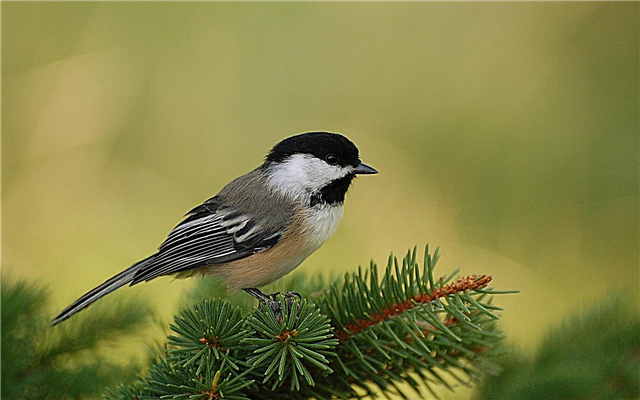The polar bear rightfully belongs to the unique and amazing animal on the globe. Quite often, they even have to starve, withstand strong winds and snow. However, polar bears are great at fishing and finding food under a thick layer of snow. Next, we suggest reading more interesting and surprising facts about polar bears.

1. Bears are considered to be quite intelligent animals.
2. To eat the bait, the bear can roll a stone into a trap.
3. About 30 years is the lifespan of bears in the wild.
4. The oldest bear in the world has lived for over 47 years.
5. Curved legs have these fluffy animals.
6. Bears use crooked legs to provide balance and better grip.
7. Only a polar bear can be considered a predator.
8. The tongue of a bear is more than 10 inches long.
9. A polar bear can reach speeds of up to 40 miles per hour.
10. Depending on the type of bear, the shape of the claws of this animal differs.
11. Only polar bears have long and straight claws.
12. More than 40 beats per minute is the normal pulse of a polar bear.
13. The normal pulse of a bear during hibernation is a pulse with a frequency of more than 8 beats per minute.
14. Bears can distinguish colors.
15. A polar bear can jump out of the water 2.4 meters.
16. 68 kg of meat can hold the stomach of a polar bear.
17. Termites are a favorite food of sloth bears.
18. Almost everyone can eat bears.
19. About 90% of all polar bears live in Alaska and America.
20. Polar bears can swim up to 100 miles without rest.
21. As good as people see polar bears.
22. Bear's sense of smell is 100 times stronger than that of humans.
23. At a distance of up to 32 km, a bear can feel its prey.
24. Under a three-meter layer of ice, a bear can smell a deer.
25. An unconscious bear was found in Seattle in 2004.
26. Bright brown, means from English the word "bear".
27. The bear is the symbol of the United Russia party.
28. The constellation Ursa Major is considered the third largest.
29. A bear is a distant relative of dogs.
30. The polar bear is considered the most bear in the world.
31. A male polar bear can weigh 1500 kg.
32. An adult bear can reach over 10 pounds.
33. The polar bear is considered a marine mammal.
34. The color of polar bear fur varies from white to light beige.
35. A polar bear has a black skin.
36. Almost a third of all bears on the planet live in North America.
37. More than 28,000 bears live in North America.
38. About 20 million years ago, the first bears appeared on earth.
39. Polar bears have never lived in Antarctica and Australia.
40. There are 9677 hairs per square inch of bear area.
41. Most polar bears are born without fur.
42. Only polar bears can be born with thin white fur.
43. Most bears have bare feet.
44. Fur covers the spaces between the toes to reduce heat loss on ice.
45. Bears put their feet completely on the ground while walking.
46. The claws on the forepaws of the bear are large compared to the hind ones.
47. Bears regularly eat both plants and meat.
48. The teeth of bears are different in size.
49. Bears do not empty during hibernation.
50. A newborn bear weighs less than one pound.
51. For medicinal purposes, the Asian people use the organs of the bear.
52. Among all bears, the black bear has the largest ears.
53. There are about a thousand pandas in the wild.
54. Polar bears are excellent swimmers who can swim for hours.
55. International Polar Bear Day - February 27.
56. A polar bear can weigh over 700 kg.
57. A polar bear can swim more than 700 km without stopping.
58. At a distance of more than 1.6 km, a polar bear can feel its prey.
59. Seals, bearded seals and seals are a common polar bear menu.
60. Polar bears rarely attack humans.
61. Sloth bear has the longest fur.
62. Rings on a bears' molar cut can establish its age.
63. Polar bears have two layers of wool.
64. The brown bear is more common throughout the world.
65. A bear attacked one of the Canadians in 2008.
66. The coat of a polar bear is colorless.
67. The hairs of polar bear hair are transparent and hollow inside.
68. Pregnant female polar bears constantly remain in their dens.
69. Female and male polar bears differ in weight.
70. A newborn teddy bear weighs about 450 grams.
71. Polar bears often suffer from overheating in the Arctic.
72. To maintain a normal body temperature, polar bears move reasonably and slowly.
73. To keep warm, bears cover their noses with their paws during hibernation.
74. After eating, the bears cleanse their bodies for 20 minutes.
75. Bears may experience outbursts of anger from time to time.
76. The Indians consider bears to be the human race.
77. Bears are the most similar to humans in their psychology.
78. Bears have a universal digestive system.
79. A bear can digest food of both animal and vegetable origin.
80. Bear hibernation can last 195 days.
81. Only pregnant female polar bears hibernate.
82. The speed of the bears can be equated to the speed of horses.
83. Polar bears have an excellent appetite.
84. Polar bears know how to throw themselves with different objects.
85. Polar bear liver is rich in vitamin A.
86. The female chooses her mate one year before hatching.
87. The average life span of polar bears is about 40 years.
88. An average polar bear can weigh about a ton.
89. The bears are fine with movement and coordination.
90. About 55 km per hour is the average running speed of a bear.
91. Brown bears are listed in the Red Book as an endangered species.
92. Polar bears are considered very playful.
93. The cubs are waiting for their mother when she is on the hunt.
94. The bear comes out on land almost dry after swimming.
95. The Arctic is home to polar bears.
96. Polar bears are marine mammals.
97. From March to July the mating period of polar bears runs.
98. The first positions of the polar bear are washing and brushing wool.
99. Polar bears spend more than an hour a day washing themselves.
100. The female polar bear predominantly weighs 300 kilograms.









